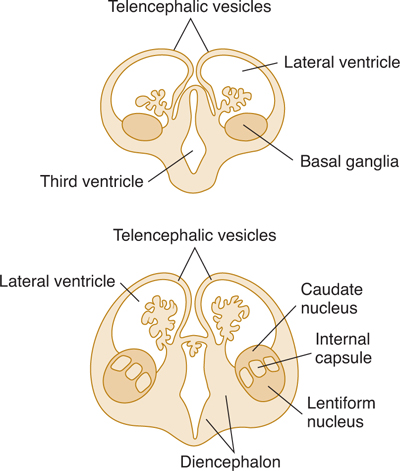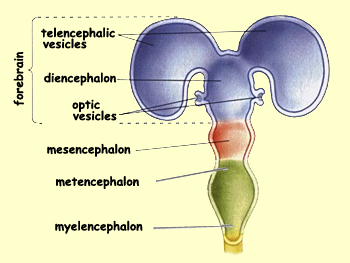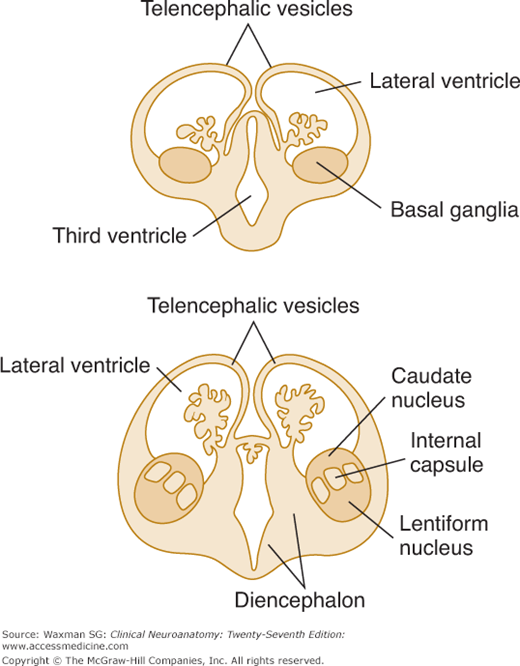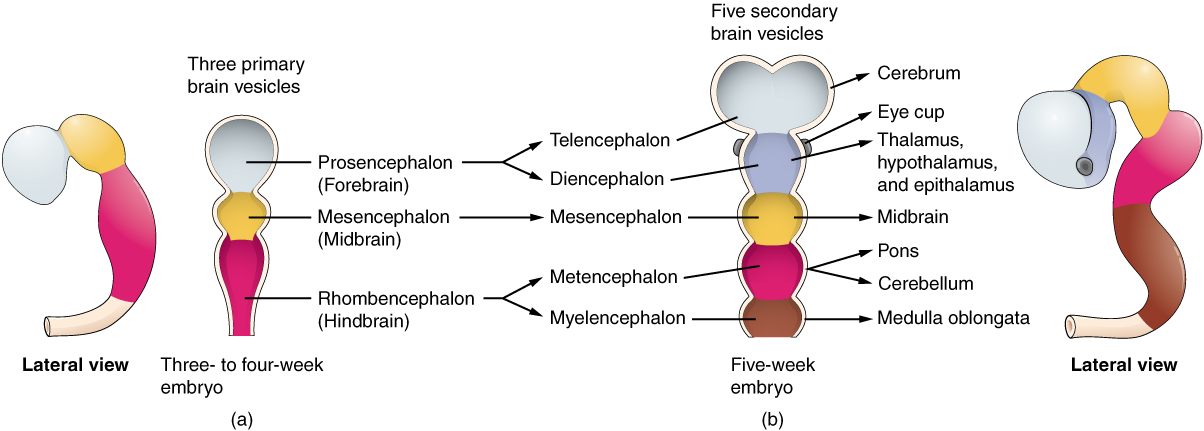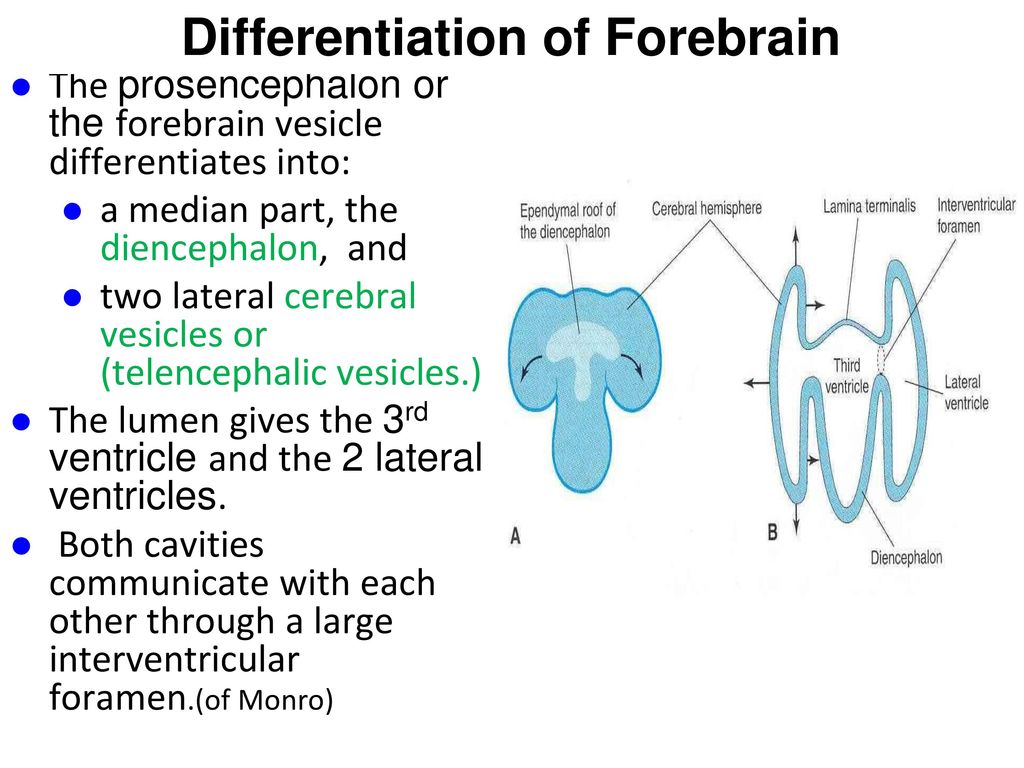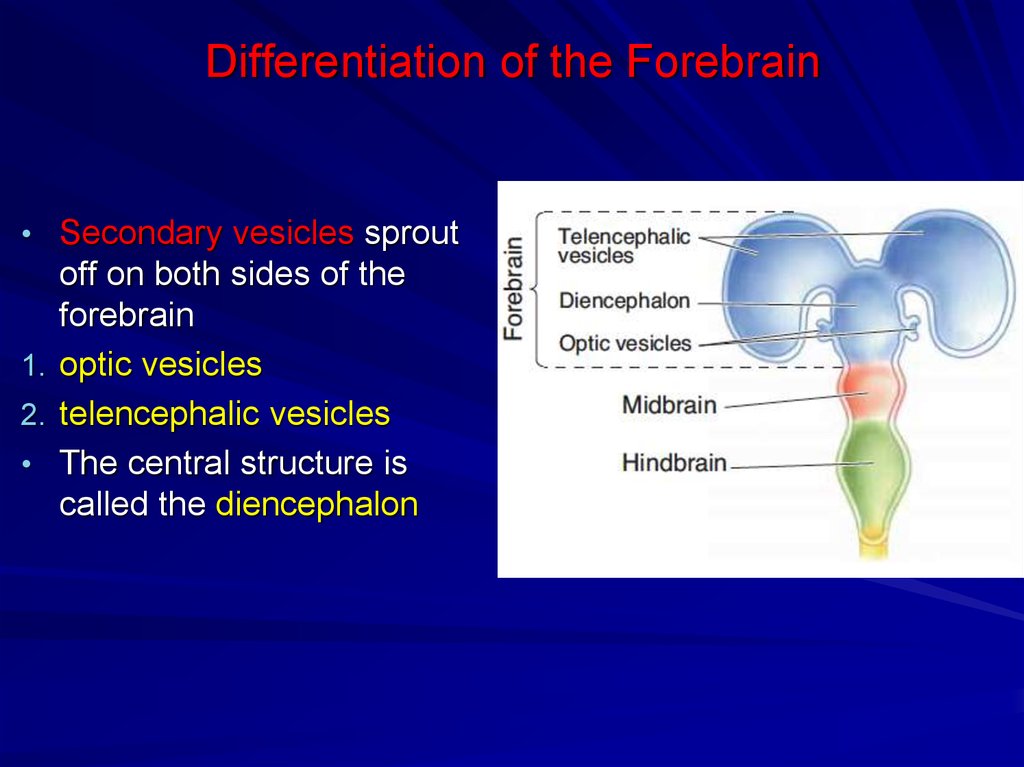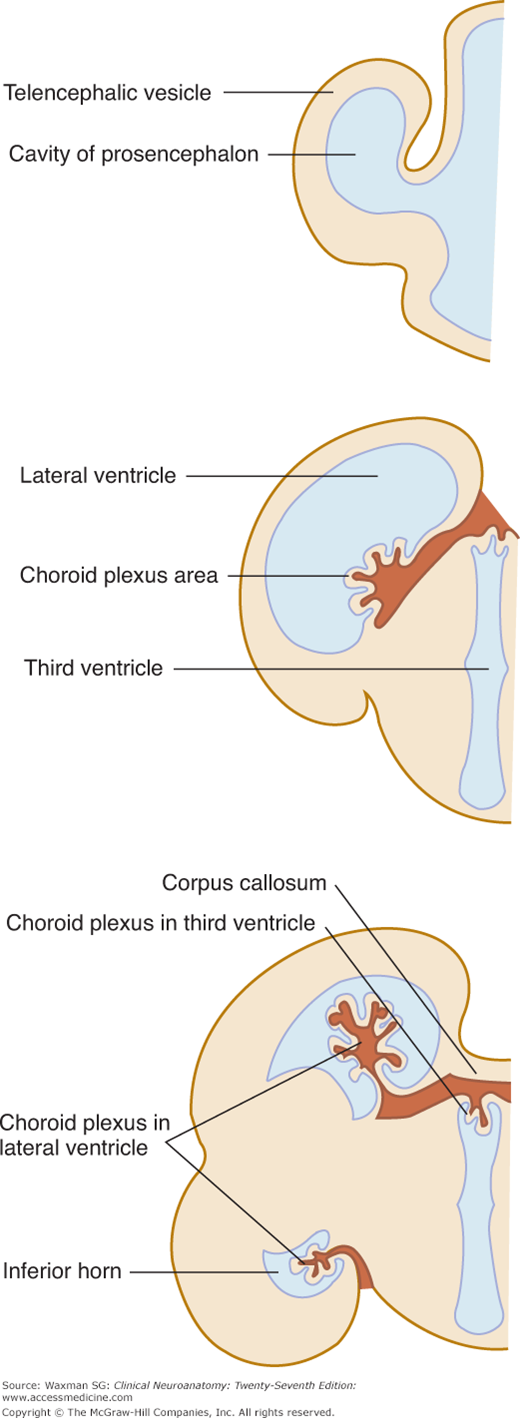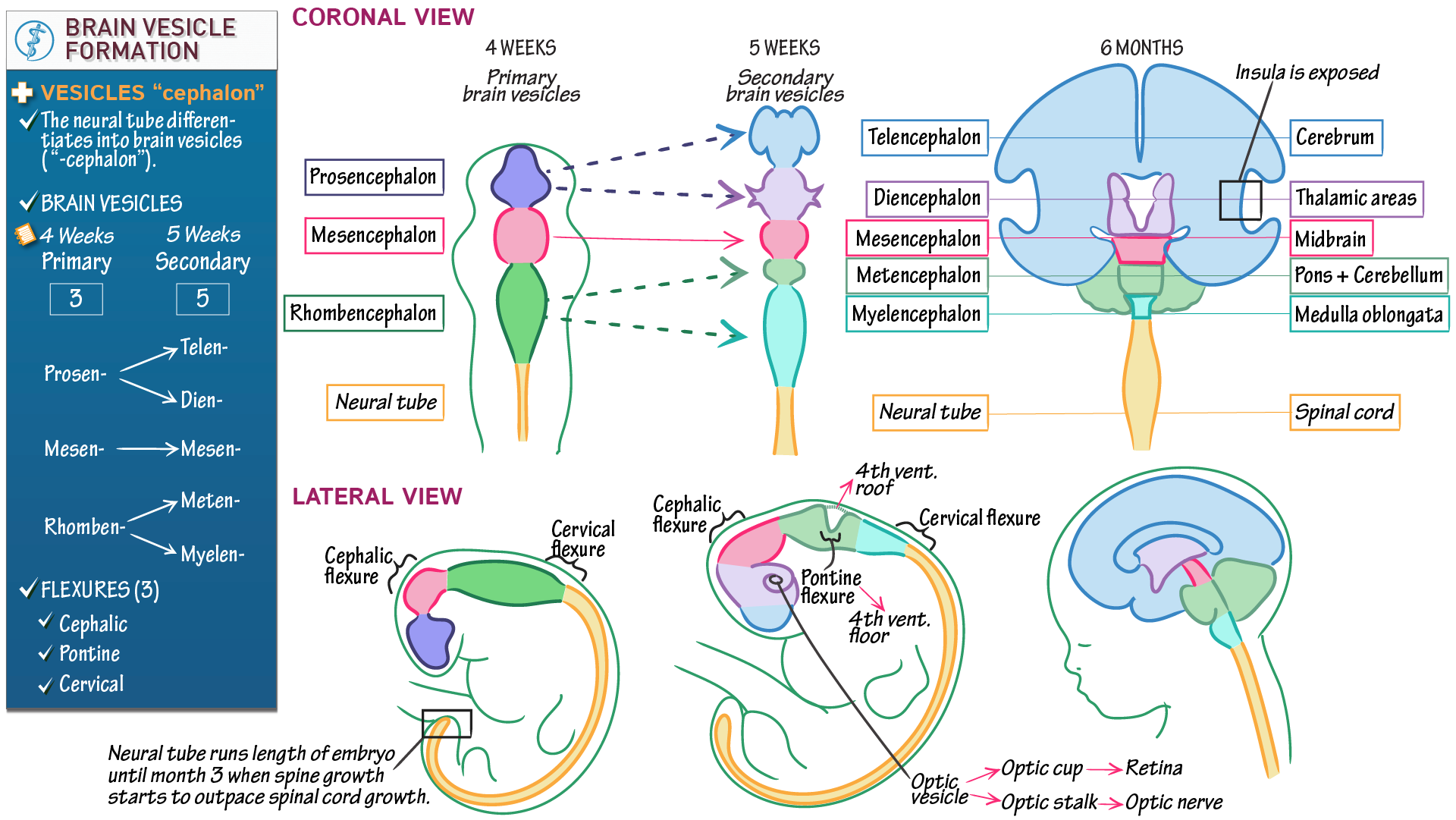Floor Of The Telencephalic Vesicle

White matter systems develops.
Floor of the telencephalic vesicle. Pallidal neuroblasts eventually migrate laterally to join the caudate putamen. Both parts of the corpus striatum. It is important to realize that during the rebirth of neuroanatomy after world war ii topographic references for the brain became founded upon the now obsolete convention of a brain length axis lacking a cephalic flexure and ending rostrally inside the telencephalic vesicle the bent axis was acknowledged in early embryos but was erroneously. The diencephalon is a division of the forebrain embryonic prosencephalon and is situated between the telencephalon and the midbrain embryonic mesencephalon it consists of structures that are on either side of the third ventricle including the thalamus the hypothalamus the epithalamus and the subthalamus.
The telencephalon eventually differentiates to become the olfactory bulbs anteriorly the cerebral cortex dorsally and the basal ganglia ventrally. With further expansion of telencephalic vesicles in upward forward and backward direction the two vesicles forming cerebral hemisphere come to lie in opposition to each other. The telencephalic vesicles become the cerebral hemispheres and their cavities become the paired lateral ventricles of the adult brain. The cerebrum or telencephalon is the largest part of the brain containing the cerebral cortex of the two cerebral hemispheres as well as several subcortical structures including the hippocampus basal ganglia and olfactory bulb in the human brain the cerebrum is the uppermost region of the central nervous system the cerebrum develops prenatally from the forebrain prosencephalon.
Rapid proliferation of telencephalic cells results in the disproportionate swelling of the telencephalon which forms a pair of fluid filled vesicles telencephalic vesicles. The diencephalon is one of the main vesicles of the brain formed during. Pallidal neuroblasts eventually migrate laterally to join the caudate putamen. We found that the periventricular vessels in the ventral telencephalon originated from a prominent basal vessel located deep on the floor of the telencephalic vesicle in the basal ganglia primordium.
The hemispheres undergo enormous enlargement in their later development and extend dorsally and posteriorly as well as anteriorly eventually covering the entire diencephalon and mesencephalon under their. The caudate putamen develops from neuroblasts of the floor of the developing telencephalic vesicle called the striatal ridge while the globus pallidus originates from neuroblasts in the wall of the 3rd ventricle of the diencephalon. As the telencephalic vesicles increase in size they completely cover the lateral aspect of diencephalon and eventually fuse with it. Telencephalic vesicles grow posteriorly so they lie over the diencephalon.
Cells of the walls of the telencephalon divide and differentiate into various structures 4.
